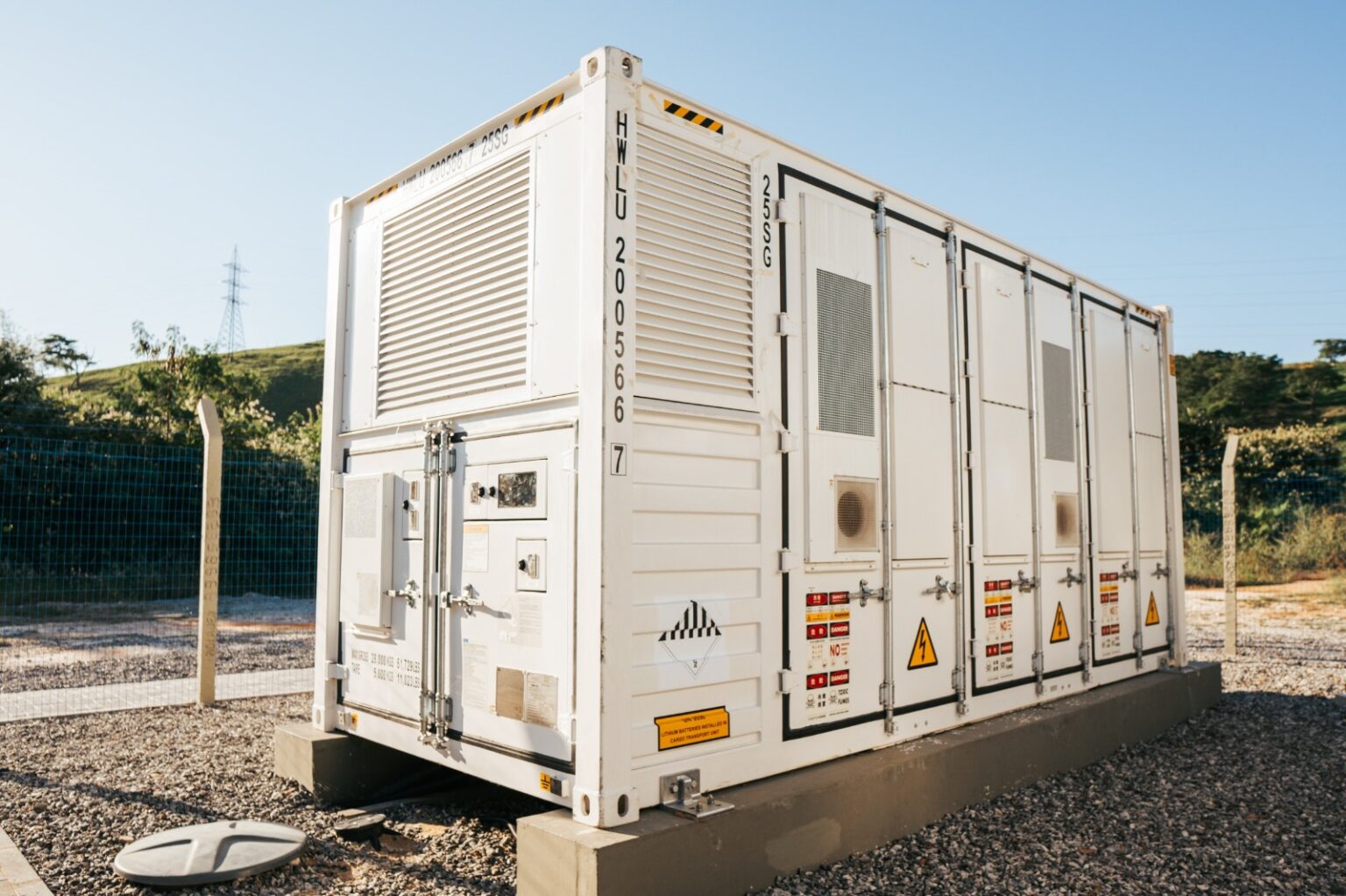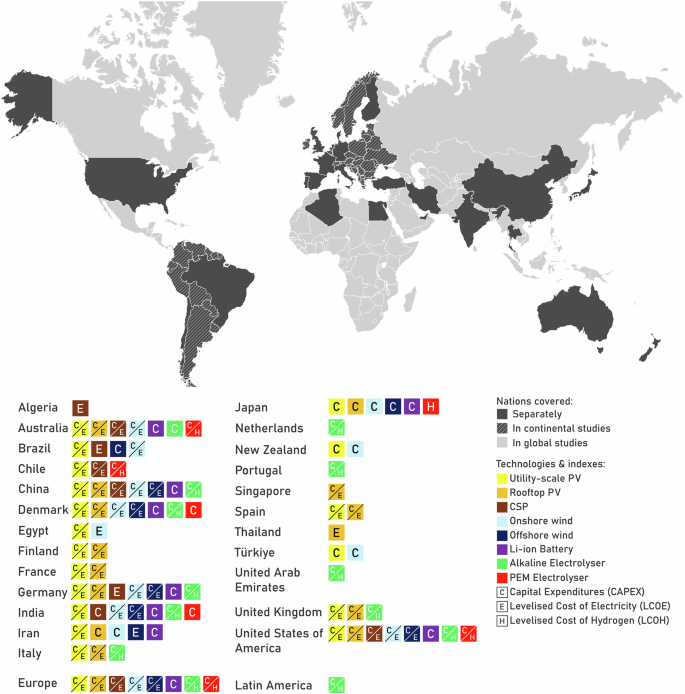Report on the Role of Energy Storage Systems in Advancing Brazil’s Sustainable Development Goals
Executive Summary: A Strategic Enabler for the 2030 Agenda
A comprehensive analysis indicates that the strategic deployment of Energy Storage Systems (ESS), such as lithium-ion batteries and pumped hydro, can significantly advance Brazil’s progress towards the Sustainable Development Goals (SDGs). By 2029, these technologies are projected to reduce the average cost of the national electricity system by up to 16%. This facilitates direct progress on SDG 7 (Affordable and Clean Energy) by lowering costs and enabling a greater share of renewables. Furthermore, by reducing dependence on fossil-fuel thermoelectric plants, ESS serves as a critical tool for SDG 13 (Climate Action), contributing to national climate commitments and fostering a more resilient and reliable energy infrastructure in line with SDG 9 (Industry, Innovation, and Infrastructure).
Achieving SDG 7: Integrating Renewables and Ensuring Affordable, Clean Energy
Transformation of the National Electricity Mix
Brazil’s electricity generation mix is undergoing a structural transformation, moving away from hydroelectric dominance towards a greater share of variable renewable energy sources. This shift is fundamental to achieving SDG 7.2, which calls for a substantial increase in the share of renewable energy in the global energy mix.
- The share of hydroelectric power has declined from 65% in 2014 to under 48%.
- Wind power’s contribution has risen from 2% to 16%.
- Solar power has grown from a negligible share to 8% (24% including micro- and mini-generation).
This transition necessitates enhanced grid flexibility and capacity to manage the intermittency of solar and wind power, ensuring a stable and reliable energy supply for all citizens.
The Role of ESS in Supporting a Clean Energy Transition
Energy Storage Systems provide a strategic solution to the operational challenges posed by variable renewables, thereby accelerating the clean energy transition.
- Lithium-ion Batteries: Ideal for short-duration applications (up to four hours), batteries offer modular deployment to manage steep daily ramps in solar generation and provide critical ancillary services for grid stability.
- Pumped Hydro Storage: Leveraging Brazil’s topography and hydroelectric expertise, this technology offers long-term storage, ensuring system reliability and reducing the curtailment of renewable energy, which supports SDG 12 (Responsible Consumption and Production) by minimizing energy waste.
Fostering Resilient Infrastructure and Sustainable Communities (SDG 9 & SDG 11)
Meeting Grid Flexibility Demands
The increasing penetration of non-dispatchable solar and wind power creates significant flexibility requirements for the national grid. Analysis of 2029 scenarios reveals a critical need for rapid-response capability to maintain system reliability, a cornerstone of resilient infrastructure (SDG 9) and sustainable cities (SDG 11).
- 1-Hour Ramps: Require 5 GW to 16 GW of flexibility.
- 4-Hour Ramps: Require 19 GW to 47 GW of flexibility.
- 7-Hour Ramps: Require 30 GW to 58 GW of flexibility.
ESS is uniquely positioned to provide this vital flexibility, outperforming conventional alternatives in both cost-effectiveness and environmental impact.
Comparative Analysis of System Cost Reduction
A comparative analysis demonstrates the superior economic contribution of ESS to building an affordable and sustainable energy system.
- Pumped Hydro (32 GW/3.2 TWh): A projected 16% reduction in grid costs.
- Batteries (32 GW/128 GWh): A projected 13% reduction in grid costs.
- Flexible Gas-Fired Plants (32 GW): A projected 4.1% reduction in grid costs.
Policy and Regulatory Frameworks to Unlock Sustainable Development
Addressing Economic, Fiscal, and Regulatory Barriers
Despite their potential, the deployment of ESS in Brazil is hindered by several barriers that must be addressed through targeted policy action to align market conditions with national sustainability objectives.
- Economic Viability: Current market structures, particularly for electricity arbitrage, do not provide sufficient revenue for ESS to be economically viable. Remuneration for capacity and ancillary services is essential.
- Taxation: An average tax burden of 76% on battery-based ESS penalizes this clean technology compared to conventional generation, creating a fiscal disincentive that runs counter to the goals of SDG 7 and SDG 13.
- Regulatory Gaps: While Brazil’s National Electric Energy Agency (Aneel) is developing a regulatory roadmap, gaps remain concerning revenue allocation, capacity auctions, and clear market integration rules.
Overcoming these challenges through comprehensive regulatory reform and fiscal incentives is imperative to enable ESS to compete effectively and contribute fully to Brazil’s energy transition and its commitments to the Sustainable Development Goals.
Analysis of Sustainable Development Goals in the Article
-
Which SDGs are addressed or connected to the issues highlighted in the article?
- SDG 7: Affordable and Clean Energy
The article’s central theme is the adoption of energy storage systems (ESS) to make Brazil’s electricity system more affordable, reliable, and capable of integrating a higher share of clean, renewable energy sources like solar and wind. It directly discusses reducing costs and increasing the penetration of renewables. - SDG 9: Industry, Innovation and Infrastructure
The text focuses on technological innovation (lithium-ion batteries, pumped hydro) and the need to upgrade Brazil’s national electricity grid (“National Interconnected System”). It highlights the necessity of building a more flexible and resilient infrastructure to manage the variability of renewable energy, which is a core aspect of sustainable infrastructure development. - SDG 13: Climate Action
By enabling a “greater share of renewables without increasing dependence on fossil-fuel thermoelectric plants,” the article addresses a key strategy for climate change mitigation. The transition away from fossil fuels towards clean energy is a fundamental component of taking action to combat climate change and its impacts.
- SDG 7: Affordable and Clean Energy
-
What specific targets under those SDGs can be identified based on the article’s content?
- Target 7.1: Ensure universal access to affordable, reliable and modern energy services.
The article connects directly to this target by stating that ESS could “reduce the average cost of the Brazilian electricity system by up to 16% in 2029” and contribute to the “reliability” of the grid, which is essential for providing modern energy services. - Target 7.2: Increase substantially the share of renewable energy in the global energy mix.
This target is explicitly addressed. The article notes the rising share of renewables in Brazil, with “wind power [rising] from 2% to 16%” and “solar from zero to 8%.” It presents ESS as a key technology to enable an even “greater share of renewable sources in the electricity matrix.” - Target 9.1: Develop quality, reliable, sustainable and resilient infrastructure.
The article details how the increasing penetration of variable renewables necessitates a more flexible and resilient grid. It states the electricity system needs to “increase capacity, flexibility, reserves, and ancillary services” and warns that the grid’s operation “could be at risk without such rapid response capability,” positioning ESS as a vital solution for infrastructure resilience. - Target 9.4: Upgrade infrastructure and retrofit industries to make them sustainable… with greater adoption of clean and environmentally sound technologies.
The entire discussion revolves around adopting clean technologies (ESS, solar, wind) to upgrade the existing energy infrastructure, which was “structured around hydroelectric dominance,” to make it more sustainable and capable of handling modern energy sources. - Target 13.2: Integrate climate change measures into national policies, strategies and planning.
The article highlights the need for policy and planning to support the energy transition. It mentions the study “Accelerating the Brazilian Energy Transition” and the development of a regulatory “roadmap” by Brazil’s National Electric Energy Agency (Aneel) to integrate storage solutions, which are clear examples of integrating climate-friendly measures into national energy strategy.
- Target 7.1: Ensure universal access to affordable, reliable and modern energy services.
-
Are there any indicators mentioned or implied in the article that can be used to measure progress towards the identified targets?
- Percentage of cost reduction in the electricity system: The article provides a specific metric: ESS could “reduce the average cost of the Brazilian electricity system by up to 16% in 2029.” This can be used to measure progress towards affordable energy (Target 7.1).
- Share of renewable energy in the generation mix: The article provides concrete data on the changing energy mix, stating that “wind power rose from 2% to 16%… and solar from zero to 8%.” This directly measures progress towards Target 7.2.
- Grid flexibility capacity: The article quantifies the infrastructure needs, stating that by 2029, “One-hour daily ramps would require 5 GW of grid flexibility… rising to 16 GW in critical scenarios.” This serves as an indicator for infrastructure resilience (Target 9.1).
- Installed capacity of energy storage: The study models specific capacities needed, such as “32 GW/128 GWh of batteries” or “32 GW/3.2 TWh of pumped hydro,” which can be used as indicators for the adoption of clean technology (Target 9.4).
- Development of regulatory frameworks: The article mentions that Brazil’s energy agency (Aneel) “has been developing a roadmap which it expects to complete by 2027.” The creation and implementation of this roadmap is a qualitative indicator of progress in integrating climate measures into national policy (Target 13.2).
- Taxation levels on clean technology: The article notes that “Taxes add an average 76% to the costs of battery-based ESS.” A reduction in this tax rate could serve as an indicator of policy support for the energy transition.
-
Create a table with three columns titled ‘SDGs, Targets and Indicators” to present the findings from analyzing the article. In this table, list the Sustainable Development Goals (SDGs), their corresponding targets, and the specific indicators identified in the article.
SDGs Targets Indicators SDG 7: Affordable and Clean Energy 7.1: Ensure access to affordable and reliable energy. 7.2: Increase the share of renewable energy.
- Percentage reduction in the average cost of the electricity system (up to 16% by 2029).
- Share of wind power in the generation mix (rose from 2% to 16%).
- Share of solar power in the generation mix (rose from 0% to 8%).
SDG 9: Industry, Innovation and Infrastructure 9.1: Develop quality, reliable, and resilient infrastructure. 9.4: Upgrade infrastructure with clean technologies.
- Required grid flexibility capacity (5 GW to 58 GW needed by 2029).
- Installed capacity of energy storage systems (e.g., 32 GW/128 GWh of batteries).
SDG 13: Climate Action 13.2: Integrate climate change measures into national policies and planning. - Development status of the national regulatory roadmap for energy storage (completion expected by 2027).
- Taxation level on clean energy equipment (currently adds 76% to battery costs).
- Reduced dependence on fossil-fuel thermoelectric plants (implied).
Source: ess-news.com







